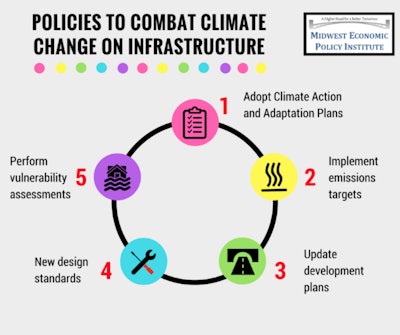
As intense weather events batter US coastal cities and offshore islands, a new study from the Midwest Economic Policy Institute warns that the threat of climate change extends much farther inland, with potentially devastating impacts on transportation and infrastructure systems across the Midwest.
“Whether we like it or not, the climate of the Midwest is already changing,” said study author Mary Craighead. “It is vital for policymakers to understand the potential costs and consequences of these changes, and to be proactive in taking actions that are necessary to protect communities and the infrastructure on which our entire regional economy depends.”

“Rising temperatures and the likelihood of more storms and flooding reduce the lifespan of roads and bridges, could cause railways to buckle, and threaten above-ground energy facilities and transmission lines,” Craighead added. “Without critical maintenance and modernization of these systems, everything from freight and commuter routes to our region’s overall economic value as a net distributor of electricity could be jeopardized.”
With national infrastructure needs expected to top $2 trillion by 2025, Craighead urged lawmakers at all levels of government to incorporate climate-related considerations into both public policy and future project planning. She further encouraged lawmakers to commit to sustainable infrastructure funding to support these needed changes, as this estimate does not account for future climate change needs.

“While some states are taking steps to address potential climate-related liabilities, more can and should be done across our region,” Craighead concluded. “This is about making prudent planning decisions and wise investments that can meet our long-term infrastructure needs and protect our economy.”
Read the Study: Climate Change and its Impact on Infrastructure Systems in the Midwest
Click Here to Read an Executive Summary of the Report



















